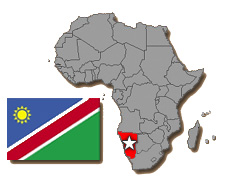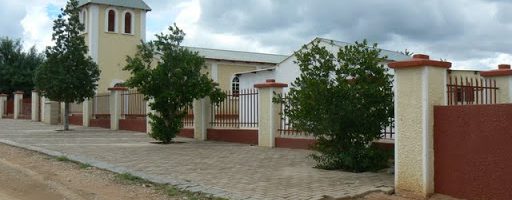Intro: a long drive around this seemingly endless and empty country reveals much natural beauty and on closer inspection a modest LGBT population struggling to re-invent itself and advocate for recognition and rights. They are spirited, courageous and determined to bring justice for LGBT citizens and education for the whole country
Namibia is a country in southern Africa on the Atlantic coast. Once a colony of Germany and later occupied by South Africa’s apartheid government, Namibia gained full independence in 1990. Namibia is the least densely populated country in the world (2.5 inhabitants per square kilometre (6.5 /sq mi). Namibia’s economy consists primarily of mining and manufacturing. It’s the fourth largest exporter of non-fuel minerals (lead, zinc, tin, silver, and tungsten) in Africa and a major producer of uranium. Sodomy is illegal in Namibia, and is punishable with prison time but homosexuality is not illegal. Treatment of gays ranges from social ostracism to (rare) physical attacks. In rural Namibia about 80 percent of (closeted) gay men and lesbians were forced by tradition to marry and have children. However, pro-gay rights groups, such as Sister Namibia, Out-Right Namibia and LGBT Network Namibia operate freely in Namibia’s major cities. Generally the climate for gays has improved since a new president, Hifikepunye Pohamba, was elected in 2004 and again in 2009.

Namibia – Random Rural Scenes
Namibia Random Rural Scenes Namibia is a huge country almost the size of Western Europe. With over 824.000 square kilometers and a small population of just over two million it is one of the least populated countries in the world. It’s human density is a mere 2.5 people per square kilometer. (Contrast that with
Namibian Capital of Windhoek
Namibian Capital of Windhoek Windhoek is the capital and largest city of the Republic of Namibia. It population is about 250,529. A population influx from all over Namibia has caused researchers to estimate the figure to be well over 300,000. It is a clean, modern, internet-connected bustling center with a range of architecture from
Luderitz City on the Atlantic Coast
Luderitz City on the Atlantic Coast Namibia is one of the largest countries in Africa, about the size of Western Europe. It gained independence from South Africa on 21 March 1990, following the Namibian War of Independence. Its capital and largest city is Windhoek. It has a population of 2.1 million people and a stable
Etosha National Game Park
Etosha National Game Park Etosha National Park is one of Southern Africa’s and most important Game Reserves. Etosha Game park was declared a National Park in 1907 and covering an area of 22 270 square km, it is home to 114 mammal species, 340 bird species, 110 reptile species, 16 amphibian species and, surprisingly, one

